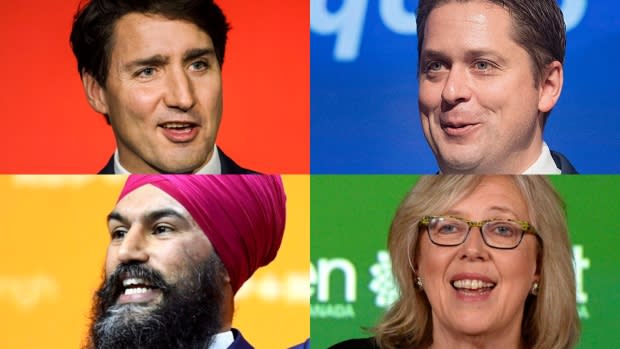Q&A: The federal party strategists behind the strategies
As October approaches, the federal parties are refining their plans to win votes. The official campaign period won't kick off until after the summer, but the unofficial race is already on.
Chris Hall, host of CBC Radio's The House, spoke with Liberal Party national director Jeremy Broadhurst, Conservative campaign chair Hamish Marshall and Green Party deputy leader Jo-Ann Roberts about technology, advertising and some of the other methods they're using ahead of election season.
Jeremy, I want to ask you about the use of social media in this campaign. How will the Liberals use it differently than, say, in 2015?
JB: I think you're always trying to look to have the conversations where the people are. With each passing electoral cycle, more and more people are getting their news, their information, from a source other than television or a traditional media source. You're always just trying to engage. It's grown each time I've been involved with the campaign and it's going to keep on going in this cycle for sure.
Hamish, you were out early when Andrew Scheer texted messages to cell phone holders in four different provinces in advance of the federal carbon tax. What was behind that strategy?
HM: People tend to check their texts perhaps more actively or more urgently than they would check an email message. So we thought we'd reach out to people that way and engage them in a conversation. We had significantly larger numbers than I expected of people who texted back. A large part of connecting with people in politics is having a dialogue understanding what's important to them and explaining our positions back to them on a one-to-one basis.
And Jo-Ann, Greens have the same kind of idea about how to reach people that they might not otherwise be able to.
JR: I think we may have a little more experience because we have not had the big budgets to have what they know as "the big air game" and lots of television advertising. So in 2015, we turned a lot of attention to social media and we'll be building on that in 2019.
Do you see these kinds of new tools as a complement to the usual advertising buys, or instead of?
HM: It's a bit of both. Some people are going to be on television getting their news, their information or their decision-making information, from television. So we're going to be there. We're going to be on social media, we're going to be on their phones in the form of texting.
JB: I'd say different tools for different jobs as well on this front. Anybody who's worked with me knows that you'll get a response faster from a text than you will from an email. But at the same time, it's a much more invasive technology, right? If you suddenly see phone numbers that you don't recognize, it could annoy as much as it can inform.

How will you be using your leader?
JR: Elizabeth May is a huge asset to the Green Party and we know that she is going to be the leader in this race who has the most experience, has been around the longest. So there is that fine line about not wearing her out, but yes, we'll be strategic. She will do a cross-Canada tour but it'll be a tour in areas where we feel we have strengths.
HM: We're going to go everywhere we think we can pick up votes. [Andrew Scheer] has been in Quebec, he's been in Toronto this past week and he'll be in Atlantic Canada again very soon. He's going around. It's no secret that the prime minister has bigger name recognition than the leader of the Opposition. We've got to work hard to make up for that disadvantage.
JB: The fact is, you have the chance to have a more interactive crowd. You have the chance to use the new technology, even in person, to create a new kind of experience. And that's something that we need to explore to keep people engaged to have those conversations going on.
(Answers have been edited for length and clarity.)

